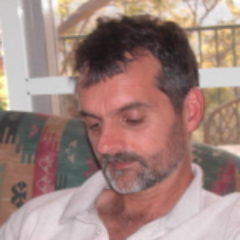This was written during my first visit to South Africa, in 1990. I believe this was published in one of TEAR Australia’s magazines.
“To Rehabilitate Young People from the Effects of Apartheid”
1990
Late this morning, the South African President, F.W. de Klerk, changed the whole course of his country’s future. In his speech at the opening of the Parliamentary session, he unbanned his black political opponents, promised to release all political prisoners, promised to lift the State of Emergency as soon as possible, and called for all peace-lovers to join him at the negotiating table.
What a great time to be in South Africa! At Sawubona we watched the speech on TV. There is a great sense of hope, relief and celebration.
But the excitement was not to last.
By mid-afternoon several thousand people are homeless after one black political group attacked the village of another group. Men, although many of their houses had been burnt, remained to defend what was left of their property. Women and children flocked into Pietermaritzburg to find refuge. Some 500 crowded into a trade union hall with virtually no possessions, no food, and no idea of what to do next.
I think it was Alan Paton who called South Africa the land of “hope on Monday and despair on Tuesday”. Hope and despair seem to occur side by side. But how can you react when the country gets to the point of “hope at midday and despair in the evening”?
It is hard to say who’s to blame for such violence. One of the things I learnt from spending ten weeks in South Africa was that it’s impossible to make quick judgements about the cause of the conflict. For instance, I had gained the impression from the Australian media that the so called “black-on-black” violence was primarily due to racial rivalry. But this is not the case. Pietermaritzburg is in the centre of the most violent area, where Zulus fight Zulus. The sides are not based on race, but on politics. The lesson to learn is not that the Australian press gives a biased view, but that we get so little information that it is foolish to think that we understand the tension.
But back to the story …
The amazing advantage of a small organisation like Sawubona is that it can act quickly and creatively to unexpected situations, whereas larger bureaucracies respond much slower. Within four hours of hearing about the crisis, the team decided to cancel their planned programs, a huge circus-tent was erected in the backyard, and 80 refugees had moved in!
When we woke up the next morning and started to prepare breakfast for the crowd, we found that most of the mothers had disappeared. “How can they do this?” I thought. “How can they just dump their children and nick off?” But we later found out that these women, in an unfamiliar area 30km from home, with their houses burnt to the ground, with nothing but one set of clothes, not knowing what had become of some of their family, these women had gone to work as usual! I suppose they knew that if they didn’t turn up they could easily be fired and not be able to find another job.
Probably the last thing I expected when I arranged to visit Sawubona was to be running a refugee camp. But that’s what we did for the next two weeks. Organising cooking. Mixing with children without being able to speak the same language. Consoling those who carried pain and grief. Locating parents. Enjoying swimming, handball, soccer, and volleyball. Enjoyable exhaustion!
When hope and despair lie next to each other, it’s hard to see what the future holds. But Sawubona’s work, at least, is one of the signs of hope.
– Matthew Clarke
The Sawubona Youth Trust is a TEAR sponsored project on the outskirts of Pietermaritzburg, in South Africa. The team, lead by Rev. Dennis Bailey, includes both black and white workers, and even an Australian – Sandy Blackman.
Dennis has seen many people whose lives have been all but destroyed by the white government’s policy of racial segregation. Sawubona’s mission, “to rehabilitate young people from the effects of Apartheid”, primarily involves the provision of emotional, spiritual and physical support for blacks who have been traumatised by the Apartheid system. But it’s not just the blacks who have been adversely affected by Apartheid. White South Africans have gradually closed their eyes to the pain of the blacks. Whites have accepted injustice for so long and allowed their conscience to atrophy. They too have been dehumanised by Apartheid, and they too need healing.
Sawubona brings blacks and whites together to help build a post-Apartheid South Africa.
The attached PDF shows my original formatting
